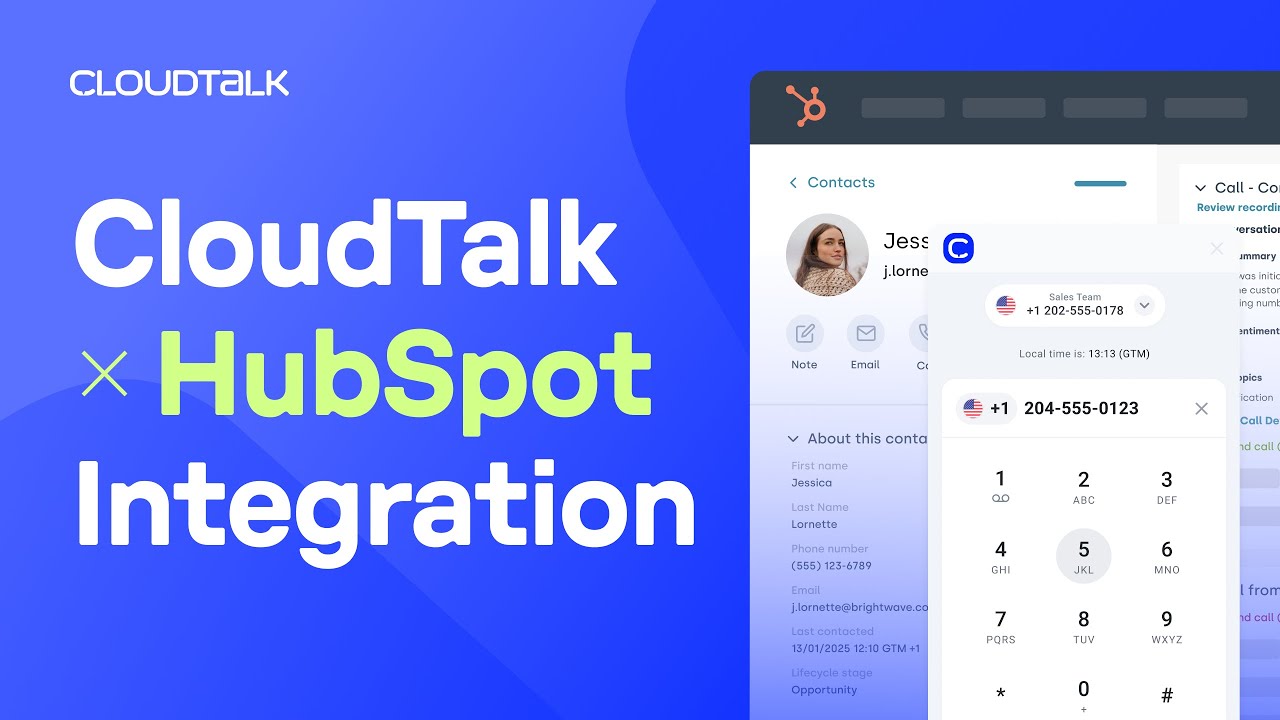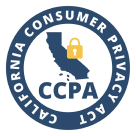Summary
VoIP integration connects your phone system with CRMs and other tools to sync data, automate tasks, and cut costs by up to 75%¹. It helps you sell faster, support smarter, and stay connected from anywhere. Setup is easy—and with a few best practices, you can skip the common hiccups and get straight to the benefits. This guide shows you how.
Sarah has explained her billing issue twice already. Now she’s on her third call, and the agent has no clue. She repeats the story—again—and starts wondering why she’s still a customer.
That’s where VoIP integration comes in. When your phone system talks to your CRM and support tools, every call is tracked, every detail synced—and no one has to repeat themselves.
In this guide, we’ll break down how VoIP integration works, why it matters, and how to avoid the common pitfalls that cost businesses time, money, and trust.
What Is a VoIP Integration?
A VoIP Integration connects your internet-based phone system—Voice over Internet Protocol (VoIP), which lets you make and receive calls over the internet—with other business tools like your CRM or helpdesk software. It turns your communication system into a connected, data-powered workspace.
Think of it like linking your phone and computer so they “talk” to each other. When a customer calls, the integration can instantly show their profile, past interactions, and purchase history—no need to switch between tabs or search manually.
Behind the scenes, technologies like APIs act as bridges, allowing systems to share and sync information automatically. This keeps customer records, call logs, and notes up to date in real time.
For example, with a VoIP-CRM integration, sales reps can start calls directly from a contact’s profile, and every call is automatically logged with timestamps, notes, and outcomes. Support teams see caller data instantly when the phone rings—giving them the context they need to respond faster and more accurately.
Top Benefits of VoIP Integration (and What They Mean for You)
Think of VoIP integration as the glue that helps you connect VoIP to your business apps—bringing your calls, messages, and customer data into one seamless system. It helps your teams work smarter, not harder. Here’s why it matters for your business:
Cut Communication Costs by Up to 75%¹
Ditch the expensive landlines and rigid contracts. VoIP phone system integrations let you scale flexibly—adding users or lines in minutes, not days. You reduce overhead while gaining more control.
Shorten Your Sales Cycle by Up to 14%²
With integrated calling directly inside your CRM, reps spend less time switching tools and more time closing deals. Every call is logged, and every note is synced, speeding up the path from lead to win.
Boost Customer Retention by 47%²
When support teams see who’s calling—and why—before answering, they can offer faster, more personal service. Business VoIP integration ensures every interaction is informed, consistent, and customer-first.
Automate the Admin, Focus on the Conversation
Call logging, note syncing, and follow-ups are done automatically. With a business VoIP phone system integration, your team doesn’t waste time on manual entry, and your data stays clean and accurate.
Keep Teams Connected From Anywhere
Whether remote, hybrid, or on-the-go, VoIP works on any device with an internet connection. And with integrated CRMs or helpdesks, agents stay productive no matter where they’re working.
Ready to cut call costs and boost conversions? Let’s talk.

Types of VoIP Integrations
VoIP integrations come in different forms depending on what your team needs—whether it’s better customer context, smoother workflows, or easier ways to stay connected. Here are some of the most common types:
CRM Integration
VoIP and CRM integration connects your phone system with tools like HubSpot, Salesforce, or Pipedrive. It logs calls automatically, shows customer info during conversations, and lets agents call directly from the CRM—saving clicks and reducing context switching.
Best for: Sales-driven teams and account managers who rely on real-time customer data.
Example:
A rep sees a warm lead in HubSpot, clicks to call directly from the contact record, and the entire interaction—including notes and call outcome—is logged automatically in the CRM. You can achieve this with tools like CloudTalk, which offer native HubSpot telephony integration.
Help Desk Integration
Linking VoIP with help desk tools like Zendesk or Intercom brings calls and tickets into one place. Agents can answer questions faster, keep better records, and stay focused on helping—not juggling systems.
Best for: Support teams handling high volumes of inquiries across multiple channels.
Example:
A customer calls about a login issue. The agent sees their open ticket in Zendesk as the call comes in, adds notes during the conversation, and closes it—all in one screen. You can do this with CloudTalk and Zendesk VoIP integration.
Unified Communications (UC) Integration
UC integrations combine voice, video, chat, and email into a single platform. Instead of jumping between apps, teams can collaborate in one spot—great for hybrid work or fast-paced support and sales teams.
Best for: Distributed or remote teams needing a single workspace for all communication.
Example:
A sales manager books a call through Google Calendar, takes the call in Zoom, and shares deal updates in Slack—all synced with UC setup.
Contact Center Integration
With a call center software integration, VoIP adds features like smart call routing, real-time analytics, and Click-to-Call to your contact center. It helps agents stay efficient and gives managers the visibility they need to keep things running smoothly.
Best for: Call centers and customer-facing teams in industries like retail, finance, or logistics.
Example:
A customer presses “2” for billing. With a VoIP system like CloudTalk and contact center software in place, smart routing sends the call to a finance agent, while the manager monitors live call stats in the dashboard to track real-time volume.
API Integration
APIs let you build your own telephony workflow automations by connecting VoIP functions—like call logging or customer lookups—into the tools you already use. It’s a flexible option for teams that need custom solutions.
Best for: Tech-savvy teams, SaaS companies, or businesses with complex internal workflows.
Example:
A SaaS company builds a custom interface where agents can start a call, log feedback, and push call data into their product’s user dashboard.
Softphone Integration
With phone system app integration, your computer or mobile device becomes a working phone—no desk phone needed. As long as there’s an internet connection, your team can stay connected from anywhere, whether they’re in the office or fully remote.
Best for: Remote teams, startups, or businesses with flexible work environments.
Example:
A remote employee logs into a VoIP desktop app—like CloudTalk—answers calls from their laptop, and transfers them to teammates seamlessly, without needing a physical phone.
How to Set Up a VoIP Integration Step by Step
VoIP integrations—whether with a CRM, helpdesk, or email tool—use APIs to connect systems and sync data automatically. Here’s what the setup and experience usually look like, step by step:
#1 Connect the Systems
You’ll start by linking your VoIP system to your CRM or app. This is usually done using OAuth (secure login) or an API key. Once connected, the two platforms can start sharing data in real time.
#2 Map Users and Seats
Next, you match users between systems. For example, “Agent A” in your CRM gets linked to their user profile. This step ensures accurate data syncing for each person on your team.
#3 Choose What to Sync
You’ll configure which actions get logged automatically—calls, voicemails, notes, SMS, or call outcomes. This determines what appears in your CRM or email tool after each call.
#4 Test the Workflows
Before going live, you’ll test common actions like:
-
Clicking to call from the CRM
-
Seeing a “screen pop” with customer details
-
Checking if call logs and notes sync correctly
#5 Work Seamlessly From Your CRM or App
Once live, agents can make and receive calls directly from familiar tools like your CRM. As calls come in, the VoIP system displays the customer’s profile automatically and logs all interactions—calls, messages, and notes—so everything stays in one place.
#6 Get Support and Training
A good provider offers onboarding, documentation, and support if something breaks. Whether it’s guided setup, a searchable knowledge base, or live chat, help should be easy to access.
Troubleshooting VoIP Integration: 7 Common Issues and How to Fix Them
VoIP integrations should make your day easier, not harder. But when things go wrong, they can create extra work, missed data, or customer friction. Here are seven problems teams often run into—with real-world examples and quick tips to fix each one.
#1 The Integration Isn’t Really “Integrated”
Some tools say they work with your CRM, but all they do is log a timestamp. No notes, no outcomes, no sync.
Example:
A sales rep finishes a call expecting everything to be logged—but only the call time shows up. They have to rewrite their notes manually, which delays follow-up.
What to do:
-
Use a native integration—not a third-party plugin.
-
Check if note syncing and outcome tracking are included in your plan.
-
Make sure user accounts are properly mapped between systems.
#2 It Works… But Only on One Version
Sometimes the integration only works on desktop—not on mobile. Or it supports your CRM brand, but not your specific version.
Example:
A support agent using the mobile app can’t see customer history during a call. They’re forced to ask the client to repeat everything.
What to do:
-
Confirm the integration works with your exact CRM version and app.
-
Test both desktop and mobile workflows before rolling out.
-
Keep all tools updated to avoid version mismatches.
#3 Data Doesn’t Sync Properly
Call logs don’t show up. Notes go missing. Duplicate records start to appear. It’s hard to trust the data.
Example:
A manager opens a customer profile and finds two versions—one has the notes, the other has the recording. Which is right? Nobody knows.
What to do:
-
Run a speed test and use wired internet where possible.
-
Enable QoS (Quality of Service) on your router to prioritize VoIP traffic.
-
Double-check field mappings between systems.
-
Collect logs and screenshots to escalate to support if needed.
#4 Some Features Just Don’t Show Up
Click-to-call works, but the SMS sync doesn’t. Or outcomes aren’t being tracked. You’re missing pieces.
Example:
A rep sends a follow-up SMS, assuming it’s logged. A week later, the customer complains no one followed up. The message was never tracked.
What to do:
-
Revisit your integration settings and enable all needed features.
-
Update your software—outdated versions may block functionality.
-
Ask your provider what’s included based on your specific setup.
#5 It Logs Too Much—and None of It Helps
Every call logs five fields. Every voicemail, ten. Your CRM fills up with clutter that no one actually reads.
Example:
Agents scroll through pages of auto-logged data just to find one useful note. It slows them down more than it helps.
What to do:
-
Disable logging for non-essential events (like ringing or hangups).
-
Organize logs with custom fields and tags.
-
Ask your team what info they actually need—and remove the rest.
#6 Private Data Ends Up in the Wrong Place
When permissions or mappings are off, sensitive info can show up where it shouldn’t.
Example:
A manager’s internal notes about a difficult client end up in the CRM—and the client reads them during the next call.
What to do:
-
Make sure each user has the right role and access level.
-
Audit who can see internal notes or sensitive fields.
-
Use role-based access controls to prevent data leaks.
#7 Everything Breaks After an Update
One system updates, and suddenly your integration stops working.
Example:
After a routine CRM update, the click-to-call button disappears. The team spends a full day trying to fix it.
What to do:
-
Keep your VoIP, CRM, and browser up to date.
-
Check integration status after major updates.
-
Choose VoIP providers that offer first-party integrations with active support.
-
Prep support tickets with screenshots, steps to reproduce, and error messages.
Good News: Most Issues Are Easy to Fix
Like any tech, VoIP integrations can run into the occasional hiccup—but most issues are preventable with the right setup and a few best practices.
If something still isn’t working and you’re not sure why, don’t guess. Reach out to your provider’s support team with details like logs, screenshots, and app versions.
And most importantly: prioritize native integrations for the tools your team uses every day, like your CRM or helpdesk platform. They’re more reliable, easier to maintain, and far less likely to break after an update. (Eg. Solutions like CloudTalk offer native integrations with platforms like HubSpot, Salesforce, and Zendesk.)
Connect the Dots, Don’t Chase Them
In customer service and sales, timing is everything—and context is a close second. VoIP integration gives your team both. It turns scattered systems into a single, seamless flow where every call has a backstory, every follow-up has a trigger, and every agent sounds like they already know you (because they do).
And that matters: 72% of customers say that having to explain their issue to multiple people feels like poor service³. Without the right VoIP integration, your team isn’t just slow, they’re disconnected.
That’s where CloudTalk comes in. With native integrations for over 35 tools—including CRMs, helpdesks, and e-commerce platforms—CloudTalk makes it easy to sync your entire workflow. Agents get everything in one place, and your team delivers a smoother, faster, and more personal experience across every channel.
Ready to connect the dots?
Try CloudTalk’s integrations today and see what happens when your tools—and your team—start working together.

Ready to connect the dots? Try CloudTalk today.

Sources















